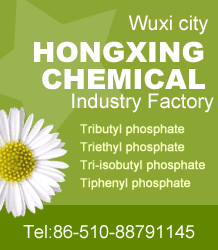China Resveratrol
Inquiry
| Post Date: | Apr 19,2024 |
| Expiry Date: | Apr 19,2025 |
| Detailed Description: |
Cas No. :501-36-0
Quantity: 2Metric Tons Specs:Resveratrol 20%, Resveratrol 50% Payment Method: L/C,T/T,Western Union,Escrow Botanical Name: Polygonum Cuspidatum Extract / Grapeskin Extract Product Specification: Resveratrol 20%, Resveratrol 50%,Resveratrol 98% Active Ingredient: Resveratrol Appearane: Fine powder Color: Yellow Brown or White Part of the plant used: Rhizome Extract method: Grain alcohol Test method: HPLC Molecular formula: C14H12O3 Molecular weight: 228.24 Molecular structure: Solubility: Soluble in methanol and ethanol What is it? Resveratrol is a stilbenoid, a type of natural phenol, and a phytoalexin produced naturally by several plants when under attack by pathogens such as bacteria or fungi. Resveratrol is found in the skin of red grapes and in other fruits. However, red wine contains very little of it, on the order of 0.1-14.3 mg/l. Resveratrol has also been produced by chemical synthesis and by biotechnological synthesis (metabolic engineered microorganisms) and is sold as a nutritional supplement derived primarily from Japanese knotweed. Resveratrol was initially mentioned in a Japanese article in 1939 by Michio Takaoka, who isolated it from the poisonous but medicinal veratrum album, variety grandiflorum. The name presumably comes from the fact that it is a resorcinol derivative coming from a veratrum species. How does it work? The effects of resveratrol are currently a topic of numerous animal and human studies. Its effects on the lifespan of many model organisms remain controversial, with uncertain effects in fruit flies, nematode worms, and short-lived fish. In mouse and rat experiments, anticancer, anti-inflammatory, blood sugar-lowering and other beneficial cardiovascular effects of resveratrol have been reported. In humans, however, while reported effects are generally positive, resveratrol may have lesser benefits. In one positive human trial, extremely high doses (3–5 g) of resveratrol, in a proprietary formulation designed to enhance its bioavailability, significantly lowered blood sugar. This 28-day Phase 1b study was conducted privately in India by pharmaceutical company Sirtris, and was announced at an investors conference in 2008. However, although it has been alluded to in review articles, the study itself has never been published in a peer-reviewed scientific publication. Despite the mainstream press alleging resveratrol's anti-aging effects, there are no accepted data to form a scientific basis for the application of these claims to mammals (see life extension section below). At the present time, research on resveratrol is in its infancy and the long-term effects of supplementation in humans are not known. Uses: The groups of Howitz and Sinclair reported in 2003 in the journal Nature that resveratrol significantly extends the lifespan of the yeast Saccharomyces cerevisiae. Later studies conducted by Sinclair showed that resveratrol also prolongs the lifespan of the worm Caenorhabditis elegans and the fruit fly Drosophila melanogaster. In 2007, a different group of researchers were able to reproduce Sinclair's results with C. elegans, but a third group could not achieve consistent increases in lifespan of either D. melanogaster or C. elegans. In 2006, Italian scientists obtained the first positive result of resveratrol supplementation in a vertebrate. Using a short-lived fish, Nothobranchius furzeri, with a median life span of nine weeks, they found a maximal dose of resveratrol increased the median lifespan by 56%. Compared with the control fish at nine weeks, that is by the end of control fish's life, the fish supplemented with resveratrol showed significantly higher swimming activity and better learning to avoid an unpleasant stimulus. The authors noted a slight increase of mortality in young fish caused by resveratrol, and hypothesized that its weak toxic action stimulated the defense mechanisms and resulted in the life span extension. Function: 1. Life extension 2. Cancer prevention 3. Cardioprotective effects 4. Antidiabetic effects |
| CAS Registry Number: | 501-36-0 |
| Synonyms: | ;trans-3,4',5-Trihydroxystilbene;3,4',5-Trihydroxy-trans-stilbene; 5-[(1E)-2-(4-Hydroxyphenyl)ethenyl]-1,3-benzenediol;5-[(E)-2-(4-hydroxyphenyl)ethenyl]benzene-1,3-diol;Veratrum album L alcohol;Trans-Resveratrol;1,3-Benzenediol,5-[(1E)-2-(4-hydroxyphenyl)ethenyl]; |
| Molecular Formula: | C14H12O3 |
| Molecular Weight: | 228.2433 |
| Molecular Structure: | 
|
| Hazard Symbols: |  Xi:Irritant; Xi:Irritant; |
| Risk Codes: | R37/38:; R41:; |
| Safety Description: | S26:; S39:; |
| Company: | Hunan Huakang Biotech Inc [ China ] |
| Contact: | Bunny Zhang |
| Tel: | 0731-88809323 |
| Fax: | 0731-88809325 |
| Email: | sales11@huakangsw.com |
-
Disclaimer statement:The information and data included above have been realized by the enterprises and compiled by the staff, and are subject to change without notice to you. The Chemnet makes no warranties or representations whatsoever regarding the facticity, accuracy and validity of such information and data. In order to ensure your interest, we suggest you chose the products posted by our gold suppliers or VIP members.

-
- Sarcandra glabra extract
- China Emodin
- China Ferulic Acid
- China Quercetin
- Curcuminoids
- Capsaicinoids
- Shikonin
- China Capsaicinoids
- Shikonin
- China Rutin
- China Aucubin manufacturer
- China 5-HTP
- Blueberry extract
- Tribulus extract,Tribulosi...
- China Blueberry extract, a...
- Common cnidium fruit p.e.,...
- Shorttube Lycoris bulb ext...
- Acai berry extract powder
- China Sesame extract,sesam...
- Grape seed extract,Proanth...
- China Enocyanin,Anthocyani...
- Roselle extract,Hibiscus s...
- Tribulus terrestris fruit
- Thyme extract
- Astaxanthin


